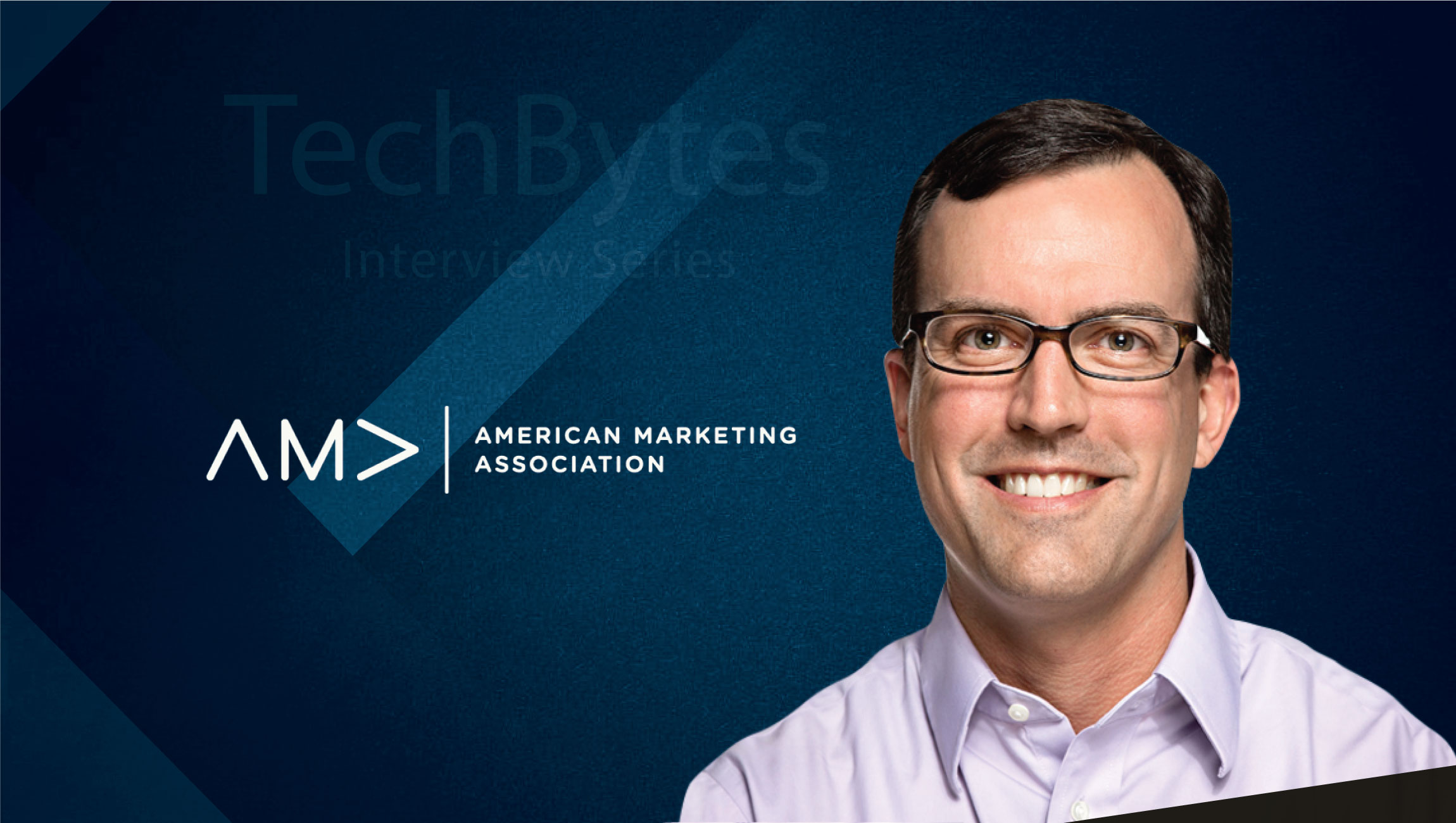Hi Jeremy, tell us about your role/team you handle at AMA. What inspired you to join the company?
As Chief Operations Officer at the American Marketing Association, my primary responsibility is the execution, enablement, and development of all Finance, Operations, and Technology within the organization. I was inspired to join the AMA because of the mission of the organization to be a thought leader and coach to marketers.
Prior to the AMA, I was the Chief Financial Officer at Trisect. I bring more than 15 years of experience in the marketing industry to my role at AMA and have worked at Edelman, Arc Worldwide, and Trisect.
Since joining AMA three years ago, my team and I have been focused on a digital transformation that we implemented in February 2019. This transformation involved replacing the entire tech stack at the AMA including new Salesforce CRM, WordPress CMS, Sage Intacct ERP, and other related systems. It has enabled the AMA to be a more data-forward and customer-focused organization.
We have witnessed the misalignment between Sales and Marketing efforts. Automation and CRMs have taken care much of that. Do you agree? Would you share with us some examples from AMA case studies?
I think technology helps, but it does not solve the problem of misalignment between Sales and Marketing. What technology did for us at the AMA is to eliminate excuses. Previously, a lot of problems were blamed on antiquated systems, reporting, and lack of information. While we are not yet at nirvana, by increasing our access to real-time data we can focus on what the real challenges are.
Two examples:
– Audience growth: The AMA defines our audience in three concentric circles: the center is members of the AMA, next ring is customers who purchase an AMA product or service but are not members, and outside ring is the audience — people who are paying attention but are not currently paying customers. Like many businesses, we have a goal to grow our audience and improve conversion through the funnel. Improved systems have allowed us to really see where people come to the AMA from, and optimize our outreach efforts in those areas.
– Pricing: The AMA recently established a new price for membership at $149 per year (previously $300). We made this move to increase the number of marketers who can have access to the valuable resource the AMA offers to marketers to benefit their organizations and advance their careers. Real-time tracking and A/B testing allows us to see the response to the price change and if we are achieving our objectives.
What challenges do Marketing teams face in evaluating their financial need and communicating it to the Finance teams?
As a finance professional who has worked in the Marketing industry for many years, here are a few tips:
OMG, it’s budget time. Dreaded by marketers and finance people alike, budgeting time is a big source of conflict. Rife with phrases like “use it or lose it,” “zero-based budget,” and “year-over-year savings.”
My advice: be proactive. Before management can come trolling in your budget for savings, put together a plan for what you need to spend and why you need to spend it. The AMA marketing budget toolkit can be a huge help with this. Your proactivity will be appreciated, and you’ll be on your front foot for the upcoming budget discussions.
The end is near. Fiscal year-end, that is. One of the most commonly misunderstood accounting concepts is accruals. The basic idea of an accrual is that it allows you to add an expense to your actuals even if you haven’t received the bill yet. You can do this if the expense was incurred; that is, if the work was done. Conversely, if you received a bill but the work wasn’t done yet (e.g. in the case of prepayment or deposit) this expense can be deferred.
Don’t KPI yourself to death. There are so many numbers you can track, and fads regarding what is best, you may feel like you belong to the metric-of-the-month-club. Work with your finance partner to come up with a tight list of the metrics that really drive your business, put them on one page, and establish a regular cadence for reviewing them.
The AMA key marketing metrics dashboard toolkit can help with this. By staying tight, you’ll keep the focus on what’s important, and the avoid head-spinning associated with various ad hoc numbers you or your finance partner may come up with. What’s more, you’ll be able to focus your time on deriving real insights from the data.
How does AMA help Marketing teams tackle these challenges at an enterprise level?
The AMA helps in three primary ways:
– As a good coach. The AMA offers tools, templates, and thought leadership to marketers through our website, our award-winning industry publication Marketing News, and unrivaled scholarly journals with research on the cutting edge of marketing. One thing I recommend for all marketers is signing up for the My AMA Daily newsletter. It’s the only AI-driven customized newsletter for marketers. It crawls dozens of news sources and delivers a daily personalized summary to your inbox of the latest in the world of marketing. It’s much easier than subscribing to lots of newsletters, reading tons of blogs, and trying to stay on top of it all yourself.
– As a badge of credibility. The AMA offers certification programs with rigorous coursework. This allows marketers to set themselves apart by having the designation of Professional Certified Marketer in Digital Marketing, Marketing Management, Sales Management, or Content Marketing.
– By providing a sense of place. The AMA has 70 professional chapters, covering nearly every major metropolitan area in the US. Chapters provide the opportunity to connect with other marketers on a local level to network and share best practices.
We have witnessed Payment processes stalled in B2B/B2C transactions due to a lack of automation and unclear payment methodologies, especially in cross-border transactions. Which financial apps can Marketing teams use to overcome these? What would AMA recommend to CMOs and their MarTech teams?
Accounts Payable (AP) automation has been a big win for us in this area. In this day and age, no one should be processing paper invoices and checks any longer.
AP automation has three parts:
– OCR – instead of sending paper or email invoices, suppliers send invoices to an email inbox where they are scanned into the AP automation system.
– Approval workflow – based on configuration settings, the invoice is routed for approval to the appropriate budget owners.
– Payment processing – all accounting then needs to do is approve and select the payment methodology. Payment is sent electronically or the payment processor prints and mails the check.
This has been especially impactful for us during the recent requests from the state to stay at home. If we were still getting paper invoices in the mail and needing to print checks at the office, I’m not sure how we’d be continuing to operate effectively under lockdown.
Tell us about your experience in working with AI, ML, and Big Data. Where is the CDP tech-building heading to, in the next 2 years?
Most Marketing businesses today aim to be as data-driven and customer-centric as possible. The challenge with AI, ML, and Big Data is the varied states of implementation across the organization. This constant “work-in-process” mode can cause confusion, siloing of data, and prevents Marketing teams from being able to strategically leverage customer data effectively. The same can be said for business automation systems.
The Customer Data Platform (CDP) is the newest tool in the customer experience to help deal with data coming from multiple channels. Through CDP companies will be able to have a deep understanding of the customer at a highly detailed level.
At AMA we see implementing a data-centric model as the next step in our evolution. Our current model is systems-centric, where data is housed in the native systems in which it is generated. While efficient, this approach doesn’t allow us to get a full 360-degree view of the customer we are looking for at that a CDP will provide. In addition, once the data is all in one place, we can put a best-in-class reporting tool over the top to assist in generating insights.
Of course, the future of the CDP will be greatly impacted by the recent California privacy laws and how much data customers will let companies acquire in their digital lives. The AMA is currently in the process of a full data audit to –
1. Ensure we understand all the ways in which we collect and use data,
2. Be fully compliant with all relevant legislation, and
3. Have the adaptability to respond quickly to an always-evolving regulatory environment.
We recommend a similar approach for all organizations.
Tag a person in the industry whose answers you would like to read here:
Scott Hollrah, CEO at Venn Technologies.
As Chief Operations Officer at the American Marketing Association, Van Ek will lead AMA’s financial, operational, and human resource strategies.
Van Ek comes to the AMA with more than 15 years of experience in the marketing industry, including working at Edelman, Arc Worldwide and most recently Trisect, where he was the Chief Financial Officer.
As the largest community based professional marketing association in the world, the American Marketing Association is trusted by marketing and sales professionals to help them discover what’s coming next in the industry. The AMA has a community of local chapters in more than 70 cities and 350 college campuses throughout North America. We’re home to award-winning content, PCM® professional certification, premiere academic journals, and industry-leading training events and conferences.












